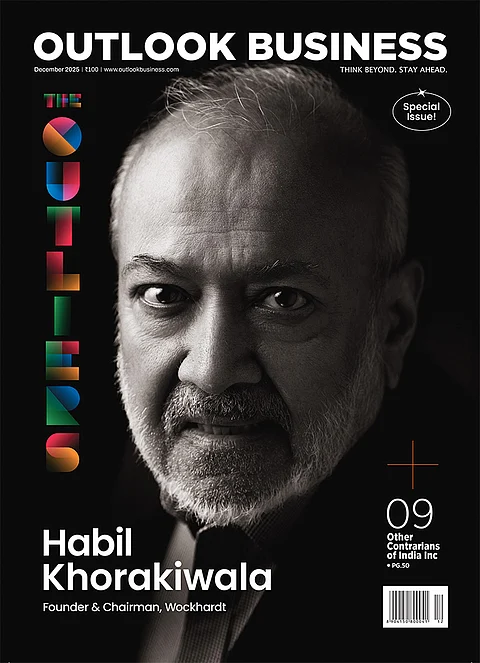
Indian exporters face time lag before trade agreements offset US tariffs impact.
Labour-intensive exports like textiles, gems, carpets gain from TEPA and UK CETA.
Non-US markets such as China, Germany, UAE show strong growth potential.
MSMEs confront compliance, supply chain, and non-tariff bottlenecks in new markets.
India’s push to diversify its export base through a network of new trade agreements is gathering pace, but Jyoti Vij, Director General of the Federation of Indian Chambers of Commerce and Industry (FICCI), highlights that the real impact of such deals to cushion the exporters affected by 50% US tariffs will take time.
Vij notes that exporters often struggle to shift markets quickly because most trade contracts are tied to long-term commitments, leaving limited room for rapid change. The challenges are particularly acute for MSMEs, which must also grapple with resource constraints, unfamiliar regulations and non-tariff barriers in new destinations, she adds.
In this exclusive interview with Outlook Business, Vij shares her perspective on how Indian exporters are navigating the US tariff shock, the role of emerging trade deals in unlocking alternative markets and the bottlenecks that continue to slow India’s march into new export frontiers. Edited Excerpts:
Which non-US markets are currently growing fastest for Indian exports, and show real potential to scale as alternative demand pools?
Despite global headwinds and uncertainty in the trade environment, our exports have maintained growth. During the first five months of the current fiscal year, while the overall exports recorded a moderate growth of 2.5%, the non-oil and non-gems & jewellery exports during this period grew by 7.8% year-on-year.
Analysis of India’s exports to the US reveals that our exports to the US rose nearly 18% during first five months of the current fiscal (up to August 2025), which may be attributed to pre-emptive inventory accumulation by importers in response to the levy of reciprocal tariffs. In-fact, the impact of additional tariffs levied by the US on India in August (25% from 7th August and additional 25% from 27th August) is not yet seen, as August exports to the US rose by 7% year-on-year. The real impact on exports may be felt over the next few months, perhaps until the BTA is signed between India and the US.
Non-US markets are also emerging as critical growth anchors. Between April and August 2025, exports to China rose 20%, Germany 11%, and the UAE 6.5%. India has also been actively advancing trade partnerships with major economies. India’s trade agreements with several countries over the last few years has opened up opportunities for Indian businesses.
What share of India’s top labour-intensive exports already going to those markets?
Labour-intensive sectors are also tapping into alternative markets to cushion against global headwinds. For apparels, exports to key destinations such as the UK, UAE, Germany, the Netherlands and Poland have recorded positive growth in recent months. Similarly, carpets—which have traditionally been heavily exported to the US—have witnessed growth in markets such as the UK, UAE, Netherlands and Sweden. Likewise, gems and jewellery have shown encouraging performance in destinations including the UAE, Hong Kong, France, Australia, and Canada.
How much of the displaced US export demand can realistically be absorbed by these alternative markets?
India’s merchandise exports to the US were $86.5bn in 2024-25. It is estimated that nearly 55% - 60% worth of merchandise now faces direct exposure to higher duties. Although the initial baseline tariffs have not had a major impact so far, however, the outlook remains uncertain, and the full effects are likely to unfold in the coming months.
The key impacted sectors like apparel and gems & jewellery have shown decent growth in several non-US markets, which is an encouraging sign.
To what extent do the recently activated TEPA, as well as other existing trade agreements, provide insulation for labour-intensive exporters?
Recently, India signed two key trade agreements with European partners. TEPA with four EFTA countries, which took effect on October 1st, is expected to improve market access for Indian exports, particularly for sectors like food processing where the tariffs have been eliminated. This marks a positive step in enhancing India’s trade footprint in Europe. The recently signed India-UK CETA is also expected to come into effect next year, which will unlock huge opportunities and serve as a key driver for growth in India’s exports.
The UK’s import market is currently valued at over $800bn and is growing at a CAGR of 4.1%. However, India’s current share in the UK market is below 2%, indicating that there is a huge untapped potential.
The implementation of India-UK CETA will lead to enhanced market share for India and give a further push to exports in key labour-intensive sectors such as apparel, made-ups, carpets, marine products, auto components and organic chemicals.
In your view, how many months would it take before we see the real effects of such cushions in export outcomes?
While we may see some immediate results in some sectors, the real impact of these agreements will take some time as businesses need to adjust their supply chains, adapt to new market conditions, streamline compliance and build relationships with new buyers.
What are the principal bottlenecks that prevent exporters from scaling into new destinations more quickly?
Any exporters face various hurdles when they are shifting supply chains or entering new markets. Export contracts are often governed by long-term agreements, which can make swift changes difficult. This means that even when new opportunities arise, exporters cannot immediately reallocate resources or change product focus without potentially breaching existing obligations.
At the operational level, exporters often need to adapt to unfamiliar norms, procedure, customs and compliance requirements, which can include upgrading product standards, certifications and packaging regulations. For MSMEs in particular, the knowledge gaps, language barrier and limited understanding of local business practices can further complicate market entry.
Competition from established local players or global firms in the target market is another significant challenge, as it requires exporters to differentiate themselves and build brand recognition from scratch. Access to trade finance and distribution networks may also pose challenge initially, particularly for small and medium-sized enterprises. The exporters may also encounter various non-tariff barriers (NTBs), including restrictive regulations and compliances, which can add to both time and cost to trade.





























